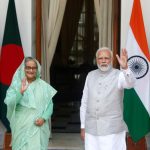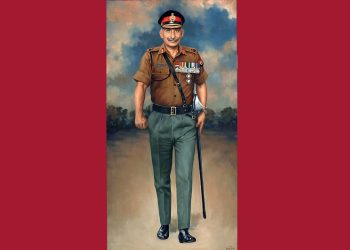India and Central Asia: The Strategic Dimension by P Stobdan published in October 2020 by KW Publishers Pvt. Ltd. 502 Pages (Hardcover), ISBN 978-93-89137-46-0
The book titled “India-Central Asia: The Strategic Dimension” by Ambassador P. Stobdan aims to provide a comprehensive overview of the political and strategic events occurring in Central Asia, particularly since 1991. It makes an effort to pinpoint the factors that influence India and Central Asia relations while seeking to comprehend the numerous intricate concerns. The author is a trained diplomat, but later decided to pursue academics. Thus, making the work quite exciting having both a theoretically informed mindset as well as practical observations on ground. He has based his observations on reports from local media in Russia and Central Asian nations as well as official sources.
The author argues that India’s historical links with the region date back 2,500 years where India viewed Central Asia from a military perspective, as a place from where incursions into India would be staged. Ancient literature like Mahabharata and Pali texts made frequent mention of threats coming from the area northwest of India. Present day, the threat is more from terrorism emanating from some geographic space in the region. He suggests that today India’s strategic thought, in many aspects, considers the Eurasian dynamics and evolves its approach accordingly. However, in contrast, the author contends that recent historical events and intense geopolitics have caused India’s long-standing contacts with Central Asia to virtually disappear. The book tells us that Kashmir served as a bridge connecting India and Central Asia until partition in 1947, when Pakistan occupied parts of Kashmir, which “finally led to direct physical disconnect that spelt the death knell for India’s northern outreach,”(p.ix).
The book is not an academic work, rather, it is a narrative about the internal politics of Central Asia and its connections to India throughout history and in the present. In international politics, geopolitical interests, which are mainly a result of structural changes in the world system, drive the foreign policies of nation states. Stobdan highlights that newly independent Central Asian nations have tried their own regional initiatives in response to external competition based on their potential, national sentiments, and political goals.
Stobdan’s work explains the geopolitical reasons behind China’s successful foray into the region. The reason behind the outreach was that China clearly visualised a Central Asia that could potentially pose a threat to its territorial integrity and political stability (p.61). The book talks about three specific strategies that China employed to deal with Central Asia: first, it understood that achieving some level of stability in Central Asia would benefit China. Second, it made sure that its actions did not provoke Russia. Lastly, it followed an economic ascendancy approach thereby creating a ‘dependency syndrome’ in Central Asia. China’s ambitions are not restricted to resource exploitation, they go much beyond simply ‘copy-cat Western-style imperialism’ (p.73).
The book also talks about the Great Power competition in the region involving the United States, Russia, China, and to a lesser extent, India. The rivalry is reflected by joint Sino-Russian efforts to blunt US influence. While Russia has historically held significant influence in the region, China’s growing economic clout and the US’ continued engagement shapes the evolving dynamics of the competition. India, although not as influential as other players, has been expanding its presence and economic ties in Central Asia as well.
About SCO, Ambassador Stobdan argues that the philosophy behind India’s entry to the grouping is to have presence, born out of the dilemma that not having a presence is detrimental to India’s interests. From a broader perspective, he states that SCO is about finding a convergence of interest in terms of the Eurasian Economic Union (EAEU) and China’s One Belt One Road (OBOR) initiative (p.110). However, he seems to skip, if not ignore, the reality of India-Pakistan rivalry impacting the grouping.
The depth of the relationship between India and Central Asia is demonstrated by Professor Stobdan’s use of these early civilizational interactions, as well as the receptive character of the cultural endeavour, which shows how steppe communities from ancient Eurasia have left their mark on Indian culture (p.177).
Broadly speaking, Central Asia depends mainly on China and Russia. The author talks about geography being the major impediment in the India-Central Asia relations, however, it is not just geography but power strength of states that also matters. The author lays heavy emphasis on the Chabahar port and the sea route through which India intends to establish connectivity with the region. However, the author does not explain how this route will be economically viable? If the intent, through this route, is to compete with China in the region, then this may be too ambitious. The natural route to Central Asia is via Jammu & Kashmir and Himachal Pradesh but the harsh reality is that only by talking with China and Pakistan will India get to Central Asia. Integration and not mere connectivity is the way forward.
Most of the book talks about Central Asia’s attraction for India’s rich cultural legacies, their appeal for India’s democratic values and pluralistic character. However, it appears rather difficult to imagine how much of a difference Indian cultural influence makes given that Central Asia’s contemporary cultural landscape finds less compatibility with Indian culture.
From the foreign policy perspective, the author notes that India’s traditional non-alignment foreign policy approach is being increasingly challenged by the tenets of non-interference and peaceful co-existence in Chinese foreign policy. It is also pertinently noted by many commentators that India’s guiding diplomatic principle is shifting from idealism towards realism, whereas other major powers are acquiring new norms and ideas as a means to supplement their pursuit of hard power. This makes it even harder for India to compete with other major powers in Central Asia.
This book provides an overall picture of the state of affairs between India and Central Asia keeping engagements by global powers like China, Russia and the US in the backdrop. It offers suggestions and recommendations for a possible way ahead in India-Central Asia relations and hence makes a good read.














